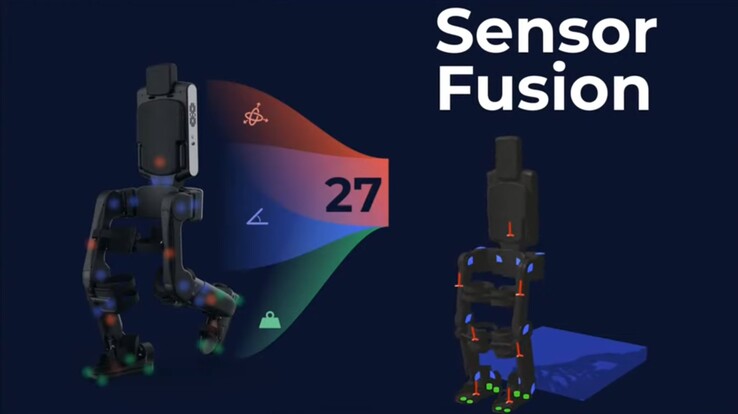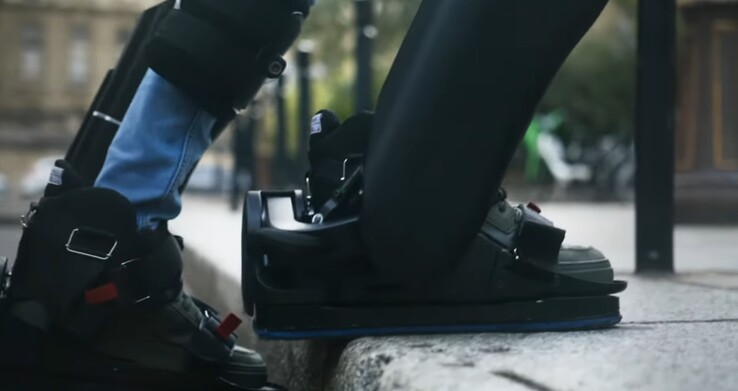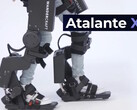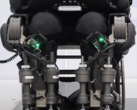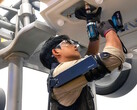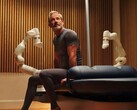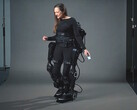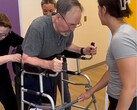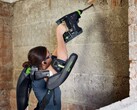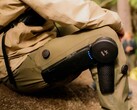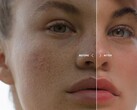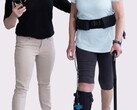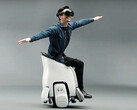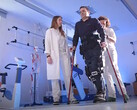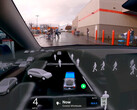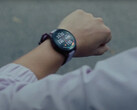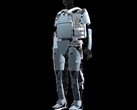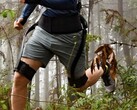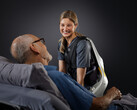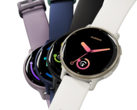Wandercraft has unveiled its Personal Exoskeleton for people who have lower-body paralysis. This battery-powered exoskeleton can be donned without assistance and enables users to sit, stand, squat, and move about the city on their own. Users also gain health benefits from walking about daily.
Exoskeletons have become commonly used in shipping warehouses to allow workers to pick and pack faster with less fatigue and wear on the body. Other recent suits enable outdoor enthusiasts to hike faster while carrying a heavier backpack. But all of these exoskeletons depend on a person with full control over their body to control movement and remain balanced. Unfortunately, people with lower-body paralysis cannot control nor balance their body, so these common suits are of little use.
The Personal Exoskeleton utilizes 27 sensors and a 3D environment camera to accurately measure the position of the suit at all times, feeding 75,000 data points per second and a real-time, 3D local area scan into the AI-powered control system. The system maintains full balance of the user at all times by controlling 12 motors on 12 joints to mirror a normal human. Additionally, the camera and sensor-feedback is used to dynamically adapt each step 200 times per second to varying ground conditions.
Because autonomy is key to personal independence, the Wandercraft exoskeleton can be donned without assistance. While an exoskeleton is ideally controlled by thought alone, current mind-reading technology is not reliable enough, so a back sensor detects when the wearer wants to walk or stand while a joystick controller enables changes in suit modes, direction, and speed.
As demonstrated in the videos below, the Personal Exoskeleton enabled a person with full, lower-body paralysis to suit up and walk the city independently of aid – a groundbreaking first in exoskeleton technology. Sitting in a wheelchair all day is unhealthy, and the benefits of walking several hours a week include better sleep and improved bladder and bowel health.
Wandercraft’s current exoskeleton, the Atalante X, is currently being used in major hospitals for rehabilitation of stroke and spinal cord injury patients. The opening of preorders for the new Personal Exoskeleton is expected to begin in 2024. While waiting, why not pick up a nice smartwatch (like this at Amazon) so you can track your health improvements wearing the suit.
Wandercraft unveils a groundbreaking innovation, its self-stabilizing Personal Exoskeleton, at an exclusive event in New York
· Exclusive in-person and virtual event today (link below) will reveal a groundbreaking innovation in robotics engineering from Wandercraft ahead of product finalization and market launch
· Once cleared, the Personal Exoskeleton could be the first and only self-stabilizing walk exoskeleton in the market for personal everyday use, helping impaired people walk hands free in their own home and communities
· Designed to provide a new mobility solution to address the complex long term physical and mental needs of mobility impaired users and provide them with greater liberty
NEW YORK, US and PARIS, France 13 December 2023 – Wandercraft, the developer of the world's first self-stabilizing walking exoskeleton, designed to enable people with walking impairments to stand up and walk again, will unveil its groundbreaking innovation, the Personal Exoskeleton, today at a highly anticipated invitation-only Keynote Event, which will be held at 11:00am ET/5:00pm CET at its U.S. headquarters, Cure®, a healthcare innovation campus in New York.
Attendees of this exclusive event will be the first to witness the future of mobility for people with walking impairments. Wandercraft’s CEO, Matthieu Masselin will reveal the groundbreaking hybrid robotics technology powering the Personal Exoskeleton and discuss its potential to forever change the lives of people with walking disabilities.
Once cleared, Wandercraft’s Personal Exoskeleton could be the first and only self-stabilizing exoskeleton in the market for personal everyday use to help impaired people walk hands free in their own communities. The Personal Exoskeleton builds on engineering and robotic breakthrough innovations already incorporated in Wandercraft’s Atalante X exoskeleton, the world's first self-stabilizing walking exoskeleton for rehabilitation support. Atalante emulates human walking, provides hands-free multi-directional locomotion, and is currently in use in rehabilitation hospitals and walking centers across the USA, Europe, and Brazil.
Matthieu Masselin, CEO of Wandercraft, commented, “Driving innovative solutions that support the walking impaired community is constantly at the forefront of our minds at Wandercraft. We want a future where people with walking impairments have a new option to vastly improve their independence, inclusion and health. Today’s exclusive unveiling of our groundbreaking innovation in robotics engineering is a key moment where we will provide a rare glimpse into the future of mobility.”
Dr. Ann M. Spungen, VA Senior Research Health Scientist, Director, Spinal Cord Damage Research Center, James J. Peters VA Medical Center, Bronx, NY and Professor, Icahn School of Medicine at Mount Sinai, added, “Our studies have shown that with as little as 4-6 hours per week of exoskeletal-assisted walking, there can be improvements in health and well-being. However, current devices require the use of crutches or a walker, limiting use to those with adequate trunk and hand function. A new, innovative robotic exoskeleton that offers self-balancing, hands-free standing and walking has the potential to advance the use of this technology in the home, community, and work environments for many people with severe walking limitations.”
Live Unveiling Event and Webcast
In addition to hosting an exclusive live event, Wandercraft is also providing virtual audiences with the ability to join the Personal Exoskeleton Keynote Event via https://youtube.com/live/2hFEDurTcR4. A recording of the Keynote Event will also be available following theevent at www.youtube.com/@Wandercraft_exo.
A press pack for use by media will be available on the Company’s websiteafter the event.
-ENDS –
About Wandercraft
Wandercraft is a global manufacturer developing and commercializing advanced robotic solutions to enable people with walking impairments to stand up and walk again. The Company has used its engineering expertise to design Atalante X, the world's first self-stabilizing walking exoskeleton which emulates human walking and provides hands-free multi-directional locomotion. Atalante X is already used by many hospitals and healthcare facilities in Europe and the USA. Several different walking programs are designed to support rehabilitation and greater independence.
For more information, please visit www.wandercraft.health.
Media contacts
Wandercraft, Inc.





